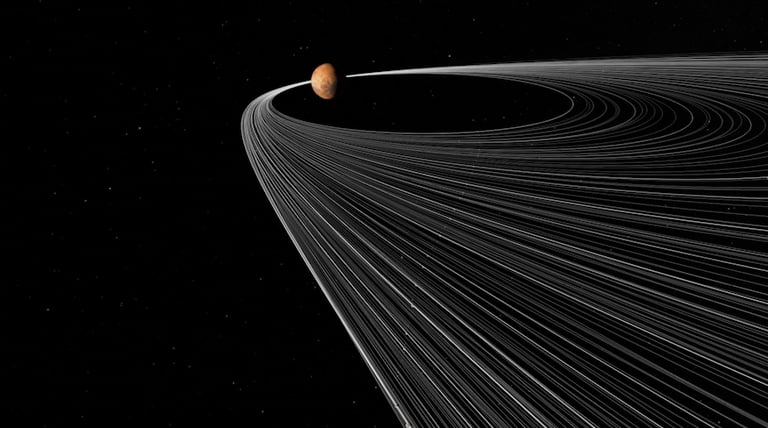NASA Unveils New Theory: Mars' Moons May Stem from Shattered Asteroid
November 20, 2024
A recent NASA study suggests that Mars' moons, Phobos and Deimos, may be remnants of an asteroid that was torn apart after coming too close to the planet.
Led by Jacob Kegerreis at NASA's Ames Research Center, the research team conducted supercomputer simulations to explore this formation scenario.
These simulations varied the asteroid's size, spin, speed, and distance, assessing the feasibility of the moons forming from debris.
The moons are small and irregularly shaped, which differs from the more common round moons found in the solar system.
This study presents a new model for moon formation that contrasts with traditional theories involving the capture of asteroids or giant impacts.
Current theories about the moons' origins include the capture of whole asteroids or debris from a giant impact, but these do not fully explain their stable, circular orbits.
Published on November 20, 2024, in the journal Icarus, the findings suggest that enough fragments could survive collisions to form the moons.
The new model allows for a more efficient distribution of materials necessary for moon formation, even from a smaller parent asteroid.
While more than half of the fragments would escape Mars' gravitational influence, some would remain in orbit, colliding and generating additional debris.
Upcoming missions, such as the Martian Moons eXploration (MMX) led by JAXA, aim to collect samples from Phobos to further investigate the moons' origins.
Studying Phobos and Deimos may also provide insights into the formation of moons around exoplanets, enhancing our understanding of planetary systems.
This research is a collaboration between NASA Ames and Durham University, supported by the Institute for Computational Cosmology.
Summary based on 2 sources
Get a daily email with more Space News stories
Sources

NASA • Nov 20, 2024
Making Mars' Moons: Supercomputers Offer ‘Disruptive’ New Explanation - NASA
Science News • Nov 20, 2024
Mars’ potato-shaped moons could be the remains of a shredded asteroid